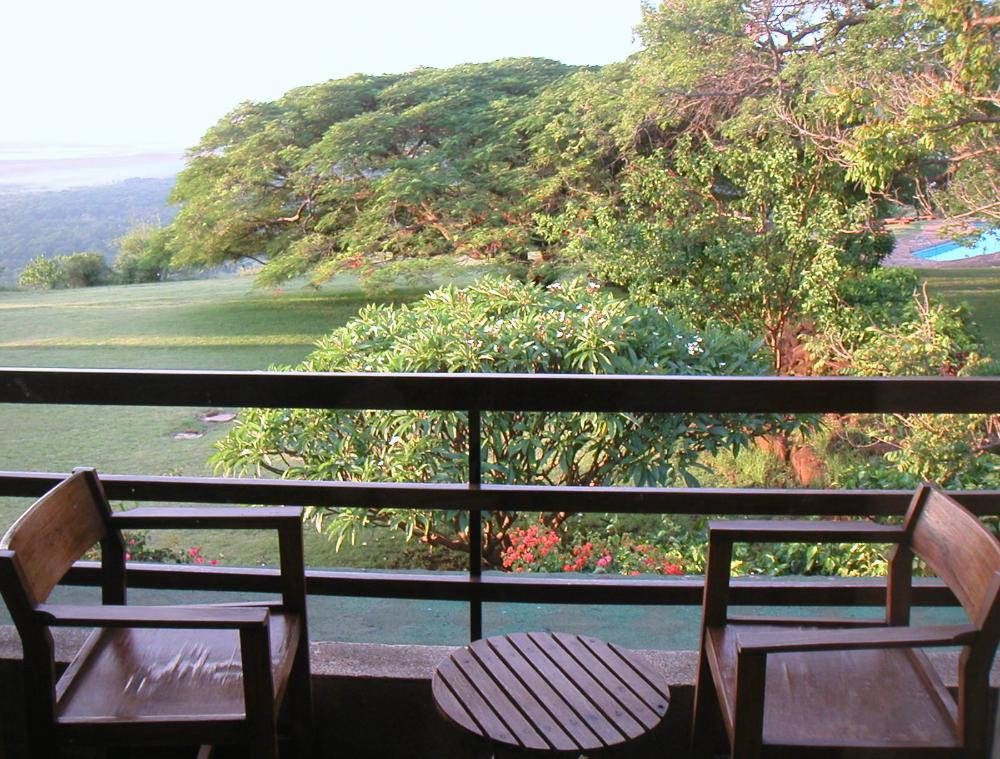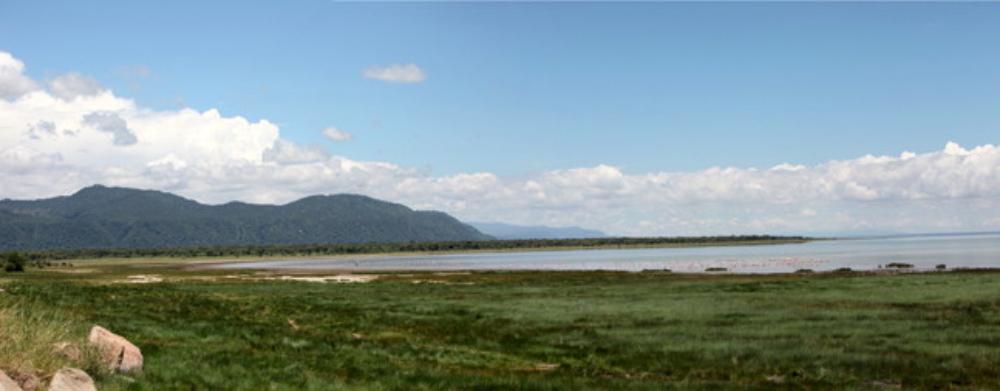
Where We Be
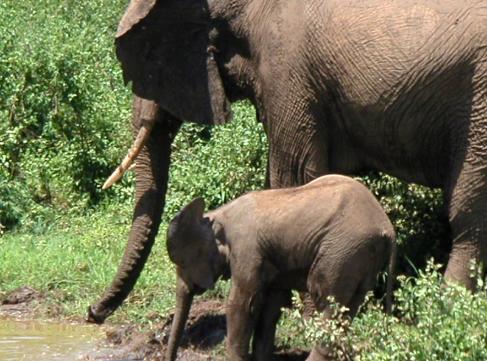
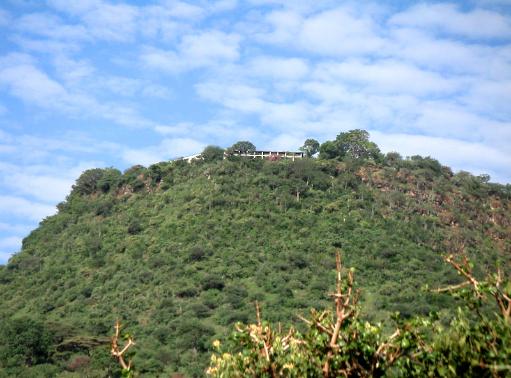
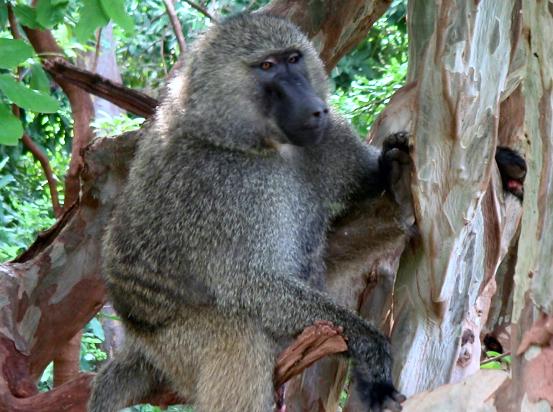
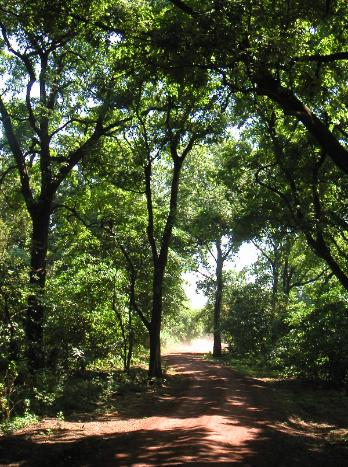
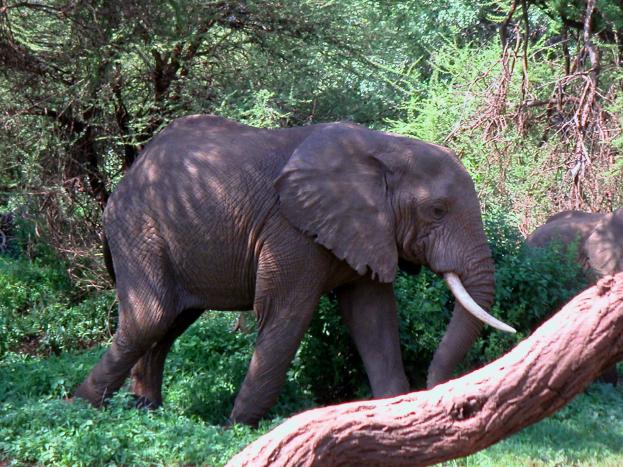
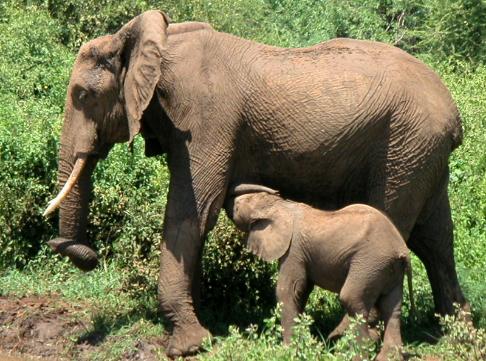
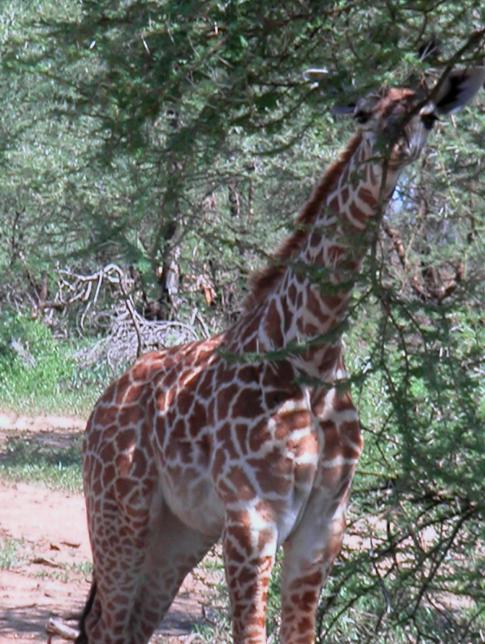
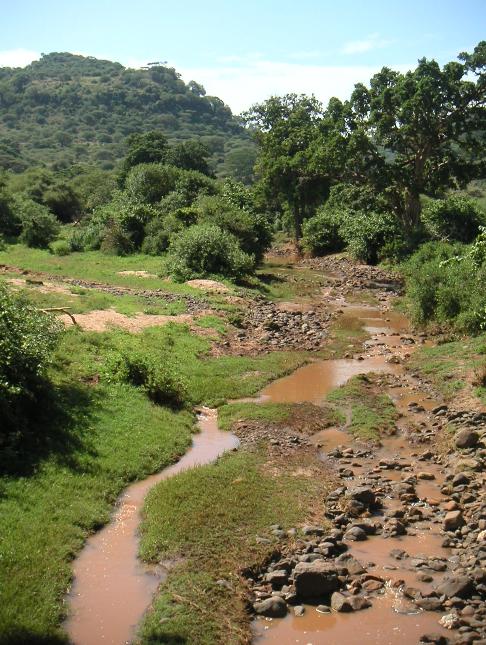
| Lake Manyara, Tanzania |
After a delightful morning safari in Tarangire,
we headed off for Lake Manyara National Park,
some 60 miles away. This park is different from
any other we visited in Tanzania. Its defining
feature is the Great Rift Valley escarpment, a
600 m (2000 ft) high cliff. Stretching for 50 km
(30 mi) along the base of this escarpment is a
lush jungle fed by groundwater. It is inhabited
by large troops of baboons, blue monkeys, and
other forest denizens. Between this forest and
the shore of Lake Manyara is a narrow swath of
savannah where elephant, giraffe, and gazelle
graze and predators roam. While our lodge was
located on top of the escarpment, our park
visits were below in the forest and savannah.
As we drove slowly through the jungle, Fideles
pointed out sycamore, mahogany, manyara, and
tamarind trees towering above our heads. If you
like monkeys like we do, then this is the park
for you. We saw vervets, baboons, and Sykes
(blue) monkeys in large numbers cavorting and
swinging through the trees with great abandon.
Troops of baboons crossed the road, often with
babies riding on their backs or clinging to their
stomachs. Most guides seem to think monkeys
and baboons beneath notice, but we found
them fascinating to watch.
we headed off for Lake Manyara National Park,
some 60 miles away. This park is different from
any other we visited in Tanzania. Its defining
feature is the Great Rift Valley escarpment, a
600 m (2000 ft) high cliff. Stretching for 50 km
(30 mi) along the base of this escarpment is a
lush jungle fed by groundwater. It is inhabited
by large troops of baboons, blue monkeys, and
other forest denizens. Between this forest and
the shore of Lake Manyara is a narrow swath of
savannah where elephant, giraffe, and gazelle
graze and predators roam. While our lodge was
located on top of the escarpment, our park
visits were below in the forest and savannah.
As we drove slowly through the jungle, Fideles
pointed out sycamore, mahogany, manyara, and
tamarind trees towering above our heads. If you
like monkeys like we do, then this is the park
for you. We saw vervets, baboons, and Sykes
(blue) monkeys in large numbers cavorting and
swinging through the trees with great abandon.
Troops of baboons crossed the road, often with
babies riding on their backs or clinging to their
stomachs. Most guides seem to think monkeys
and baboons beneath notice, but we found
them fascinating to watch.
| The groundwater-fed forest at the base of the escarpment at Lake Manyara feels jungle-like and is home to countless baboons, monkeys, and birds |
| Looking back up at the escarpment |
| Baboons and monkeys sometimes loaf right on the road. As far as they're concerned, they own the place! |
| This is a paradise for birds and monkeys |
| One of our favorite safari moments was watching this baby elephant experimenting with his trunk, lifting it up and down and curling its tip. You could almost hear him saying, “I can do THIS, and I can do THIS.” He mimicked whatever his mother did. When she splashed herself with water, the baby did the same -- or tried to, but with less effect. |
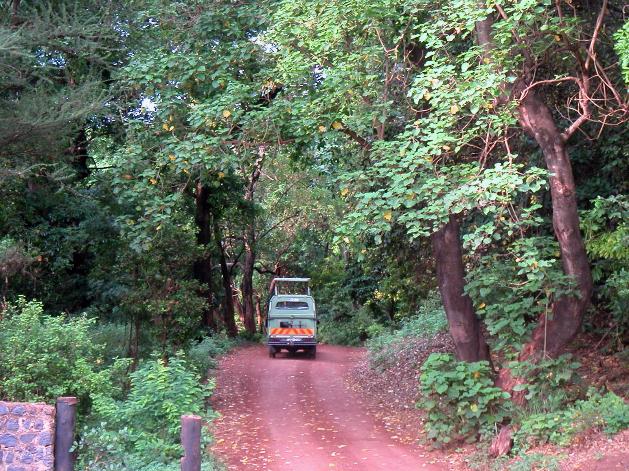
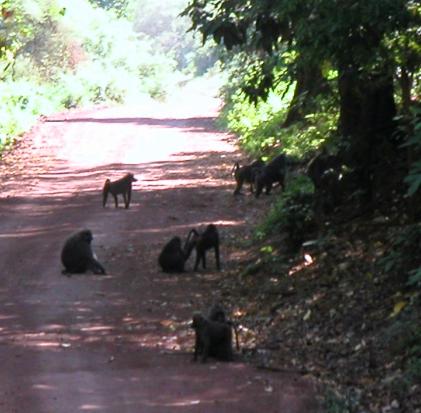
| The gardens at Lake Manyara Hotel are beautiful -- and the view over the escarpment dramatic. We arrived late in the afternoon and simply relaxed the rest of the day, taking a pleasant walk through the gardens and ambling along a path at the escarpment's edge. Far below we could see giraffe and elephant on the plains. |
| All manner of wildlife inhabits the park, what with its wide range of habitat. We were lucky enough to see a giraffe drinking water from a pond. Watching it straddle its legs to get low enough to reach the water was quite a sight. Another giraffe stood by, keeping watch for danger. |
| Enjoying some downtime between safaris |
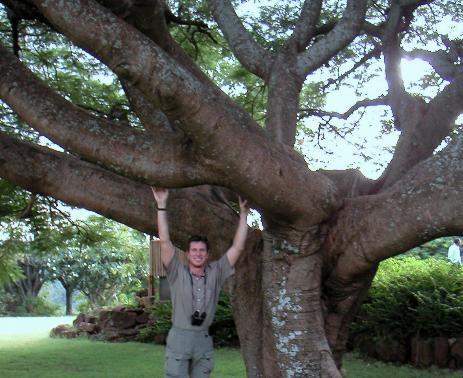
| We also saw several forest-dwelling elephant |
| Roads in Tanzania: The Pros & Cons |
It surprised us that road conditions were so
much better in Tanzania than in neighboring
Kenya. Tanzania is a poor country but obviously
is pouring resources into paving its roads and
improving infrastructure. Parks in Tanzania are
also undeniably more pristine because vehicles
are required to stay on roads. This is different
from the Masai Mara, where four-wheel-drive
paths crisscross the savannah every which
way. Keeping vehicles on the road is no doubt
better for the environment and healthier for the
animals -- but it can make animal viewing more
challenging. With time, some animals seem to
stay away from the road intentionally, making
close-up sightings more difficult. We found
ourselves frustrated more than once when we
could see a predator but couldn't get close to it.
One exception within Tanzania is Ngorongoro
Conservation Area, where you can go off-road.
much better in Tanzania than in neighboring
Kenya. Tanzania is a poor country but obviously
is pouring resources into paving its roads and
improving infrastructure. Parks in Tanzania are
also undeniably more pristine because vehicles
are required to stay on roads. This is different
from the Masai Mara, where four-wheel-drive
paths crisscross the savannah every which
way. Keeping vehicles on the road is no doubt
better for the environment and healthier for the
animals -- but it can make animal viewing more
challenging. With time, some animals seem to
stay away from the road intentionally, making
close-up sightings more difficult. We found
ourselves frustrated more than once when we
could see a predator but couldn't get close to it.
One exception within Tanzania is Ngorongoro
Conservation Area, where you can go off-road.
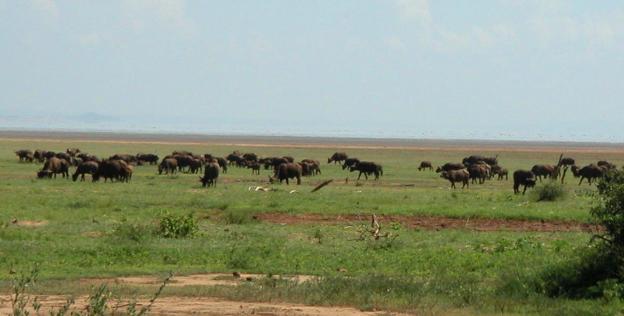
| This large herd of cape buffalo was happily grazing in the swath of savannah between Lake Manyara and the jungle |
| We expected to see flamingos at Lake Manyara but discovered that the shore of the alkaline lake is actually a mile from the road. Lake Manyara is greatly reduced in size, at least at this time of year. The flamingos are there, but too far in the distance to see well. We also saw no tree-climbing lions, for which Lake Manyara is famous -- but we were advised ahead of time not to get our hopes up. |
